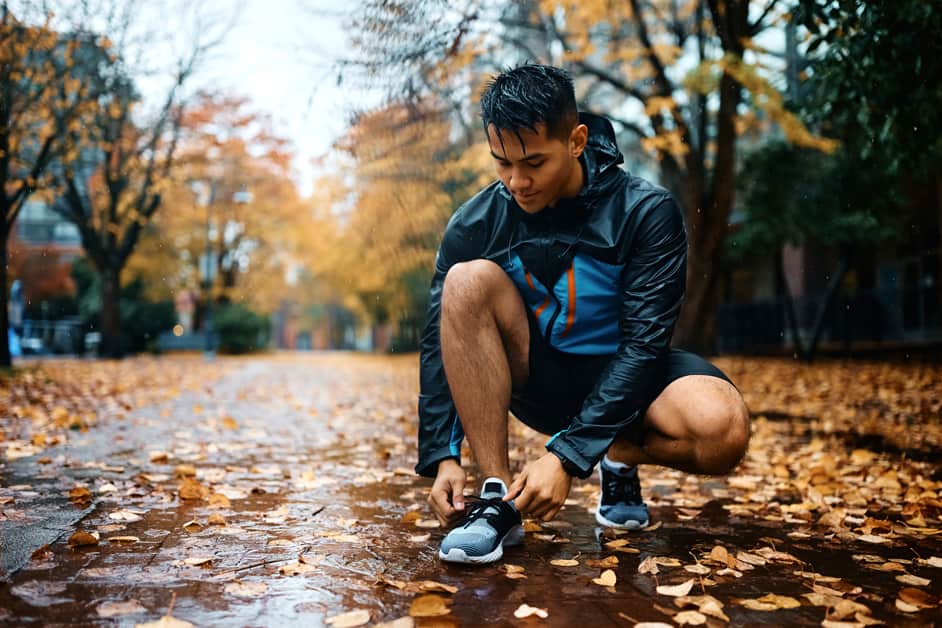Introduction
Knee pain can be debilitating and even dangerous if you don’t take the right precautions. The right footwear is key. It provides stability to the foot, ankle, leg and knee. It prevents pronation and supination and helps avoid damage due to friction.
Good shoes cushion against impacts and keep the feet cool. They should have arch support, especially if you’re heavier set.
If you have ankle instability or pain while walking, motion control shoes can help. They improve stability, protect from strain and help with underlying conditions. A professional shoe fitting is a good idea.
Causes of Knee Pain
Knee pain can have many causes. It can be from injury, medical issues, or due to regular use. Aging, genetics, and high-impact physical activities can also be culprits. Knowing the reason for the pain is key for selecting the right treatment and shoes for walking with knee pain.
Here are some usual causes of knee pain:
- Injury
- Medical issues
- Regular use
- Aging
- Genetics
- High-impact physical activities
Osteoarthritis
Osteoarthritis is a type of knee arthritis. It’s caused by worn cartilage in the joint. It can happen to anyone, but is more common in older adults due to long-term use. Weight, diabetes, family history and prior injuries can raise the chance of getting it.
To start, take a break from activities that hurt the knee. Use cold or heat on the swollen area. Anti-inflammatory medications can help too. Physical therapy with motion and strength exercises may reduce pain. Surgery may be an option if other treatments don’t work.
Overuse
Knee pain can be caused by overuse. This is common among athletes and active folks. It happens when doing the same activity repeatedly, such as running, playing sports, or lifting weights.
The knee joint has cartilage, which acts as a cushion. When it’s worn down due to overuse, it can cause knee pain known as runner’s or jumper’s knee. Pain happens on the inside or outside of the kneecap and can happen during or after activity.
Other signs of overuse injury include:
- swelling
- stiffness
- warmth
- trouble walking upstairs
- trouble squatting
Risk factors for this include:
- not warming up properly before exercise
- muscular imbalances around the knee joint
- incorrect form during certain exercises
- bad footwear
Weak Muscles
Knee pain can be caused by weakened muscles around the joint. This weakens the ability to support and properly align the joint, increasing the risk of an injury. Causes can include: inadequate recovery between exercise sessions, unsuitable exercise programs, aging, overuse injuries, and diseases like arthritis.
Weak hip adductors can lead to knee injuries. When climbing stairs or doing activities with single leg impact (like running or jumping), your pelvis should stay stable. Weak hip adductors cause your pelvis to move excessively. This puts extra stress on the knees, instead of in other areas like the glutes and quads – leading to pain in some cases.
To reduce knee pain in future sessions, strengthen the muscle groups. Weight-bearing exercises like lunges and squats can help. Doing them off both feet or using one-legged bridges can achieve this objective. Proper footwear is essential when walking with knee pain. Cushioned shoes with arch support will absorb shock better than flimsy alternatives, making for a more comfortable stride for the joints.
Benefits of Proper Footwear
Cushion and support for your feet can make a big difference if you suffer from knee pain. Proper shoes can help reduce pain, plus prevent additional injuries. Making walking and exercising easier is another great benefit of the right footwear.
Let’s take a closer look at how it helps with knee pain:
Cushioning
Cushioning is a must-have in athletic footwear. It absorbs shock when running or doing other activities. Without cushioning, your feet hitting the ground can cause joint and muscle strain.
When shopping for shoes, get ones with maximum cushioning in the heel and forefoot. Plus, look for a sole that has good arch support and flexibility. This helps your feet move naturally during activity.
Support
Wearing the perfect footwear when you have knee pain can give you a lot of help. It provides support, stability, and controls your foot movement. This is especially important if you overpronate or supinate. Shoes with arch support can stop arch and heel pain while walking. The sole should also have cushioning elements, like foam or gel. This reduces the impact on your knees and limits stress on ankles and toes.
Stability
Choosing the right type of shoe for walking with knee pain is essential. You need shoes that fit properly and support your heel and arch. A cushioned midsole gives shock absorption to reduce stress. This depends on the activity.
Having a solid, secure base can help your knees. Look for a sole with good traction. Wet grass or pavement can be slippery.
Personal preference is key. Motion Control shoes are designed to control overpronation. They often have a reinforced arch element. These may be better than a regular athletic shoe for those suffering from knee pain. They are usually heavier. Consider this if weight is an issue.
Types of Proper Footwear
Footwear is essential for lessening knee pain while walking. Appropriate shoes can alleviate pressure on the knee and provide cushioning and support. It is important to recognize which type of shoes to purchase.
Let’s dive into the different kinds of shoes and their benefits:
Shoes
When searching for shoes to walk with knee pain, it’s key to pick the right type. Shoes should offer arch support and cushioning, with a snug fit and no slipping or heel overhang. This can help reduce strain on the knee joints and muscles.
Everyone’s feet are unique, so people with knee pain might consider:
- Comfort Shoes: These offer extra cushioning and arch support, while still providing stability. Examples include running or cross-training shoes, as well as casual walking shoes with more cushioning than dress shoes.
- Motion Control Shoes: Perfect for those who overpronate while walking. They lock down the foot and provide stability. Examples include supportive running and walking sneakers, and boat shoes or moccasins that offer lateral support.
- Stability Shoes: Great for those who don’t have severe pronation but need a solid shoe, with some motion control. These usually have larger heel counters than regular sneakers.
- Orthoedic Shoes/AFOs: Orthopedic shoes reduce strain on joints like the knees. They have multi-density foam soles, or external rigid frames that contour to your feet, providing support and flexibility.
Orthotics
Orthotics are special shoe inserts, often prescribed by an orthopaedic specialist or podiatrist. They can help reduce pain and provide extra support. There are three types that suit individual needs:
- Semi-rigid orthotics. These absorb and disperse shock while giving comfort and stability. They stabilize the foot, even out body weight and lessen strain on the knee joints.
- Full-length orthotics. They provide from toes to heels with the most control and cushioning for activities like running or jogging.
- Heel cups. These are great for faster walking activities, as they give cushion to the heel during landing, decreasing shock on the knee joint.
Aside from orthotics, correct footwear is also important for reducing knee pain from walking or running. Shoes should have enough cushioning and arch support with deep heel cups for stability. Also, shoes need to fit properly, as shoes that are too tight can put pressure on the feet, knees and hips.
Insoles
Insoles are essential for footwear. They give cushioning, comfort and arch support. They come in all shapes, sizes, materials and styles.
- Foam insoles are in athletic shoes due to their light weight, shock absorption and resistance to moisture.
- Gel insoles offer superior shock absorbency and cushioning.
- Heel pads absorb shock, stop slipping and reduce fatigue.
- Orthopedic insoles are for increased arch support and to help prevent pain. Custom-made orthopedic insoles mold to the shape of your foot for the best fit.
Insoles are essential for proper footwear. They help athletic shoes stay comfortable and casual shoes look stylish.
Conclusion
To wrap up, it’s a must to have the right shoes when walking with knee pain. Shoes for walking should offer support, cushioning, and stability. These help to protect your joints from strain and minimize the pain with each step. Check with your doctor to pick the best shoes for you.
With the proper shoes, you can have less knee pain and stay active for a healthy lifestyle.
Frequently Asked Questions
Q1: What type of shoes are best for walking with knee pain?
A1: Shoes that provide good cushioning and arch support are best for walking with knee pain. Shoes with a wider toe box will also help relieve pressure on the toes and feet. Additionally, shoes with a lower heel-to-toe drop will reduce the amount of stress on the knees.
Q2: Are there any other steps I can take to reduce knee pain while walking?
A2: Yes, there are several other steps you can take to reduce knee pain while walking. These include using a cane or walking stick, using a supportive knee brace, and doing regular stretches and exercises to strengthen the muscles around the knee joint.
Q3: How often should I replace my walking shoes?
A3: Walking shoes should be replaced every 500-600 miles, or approximately every 6 months if you are a frequent walker.





